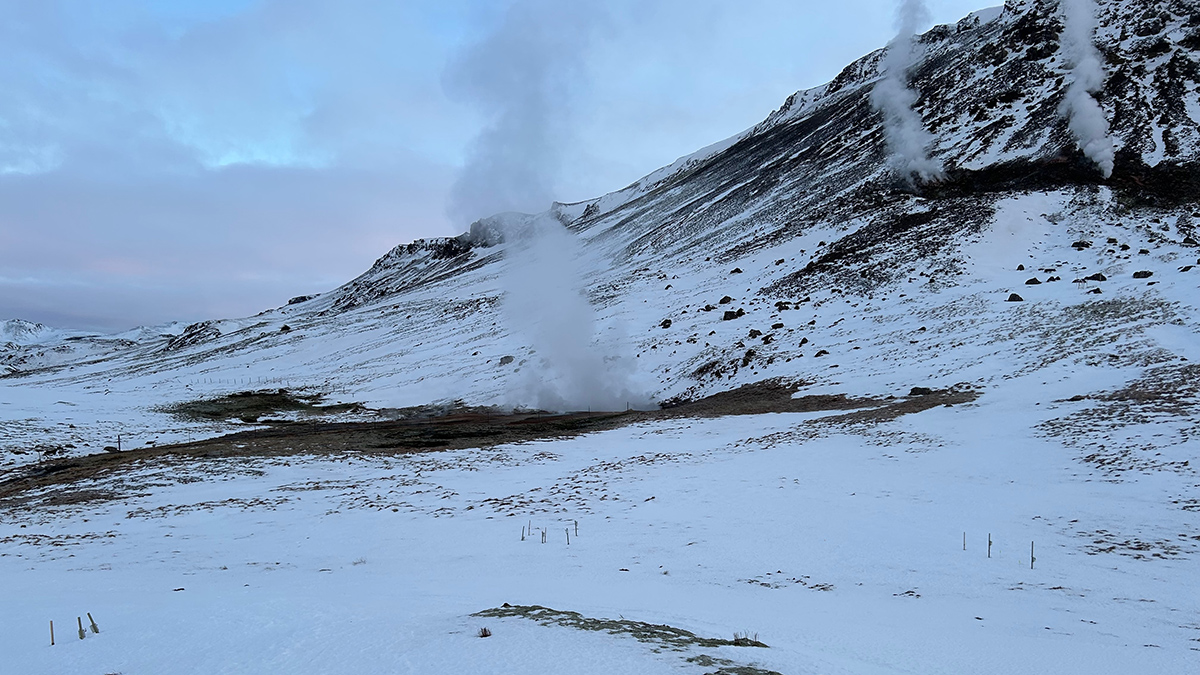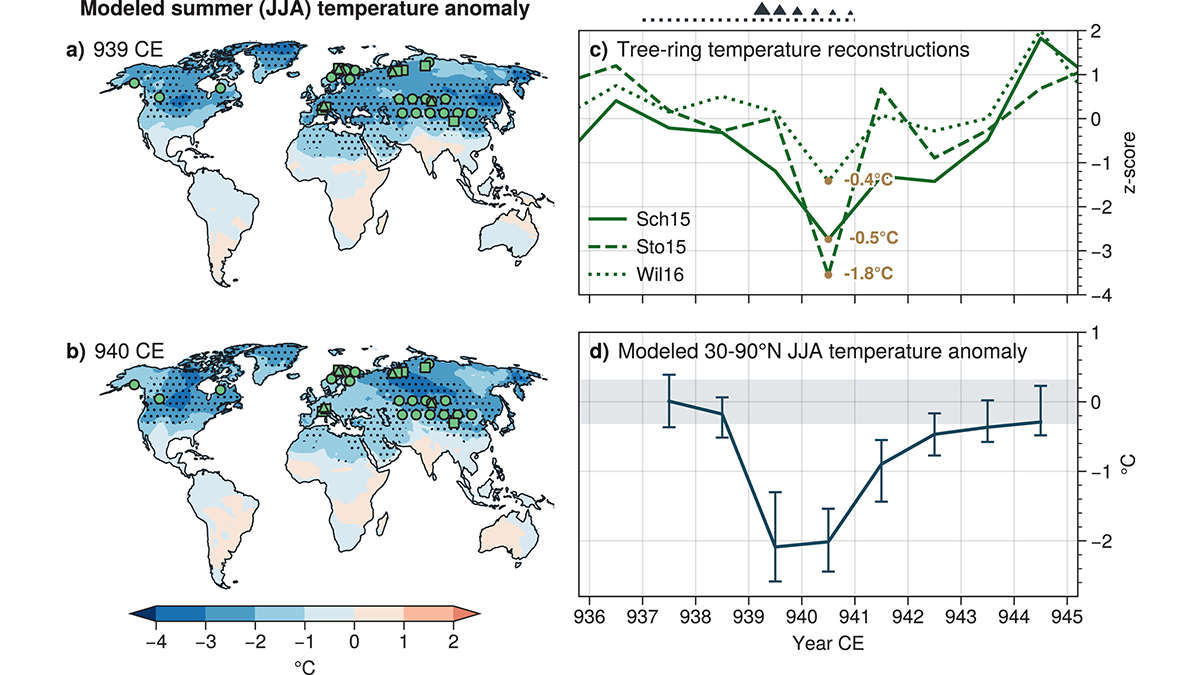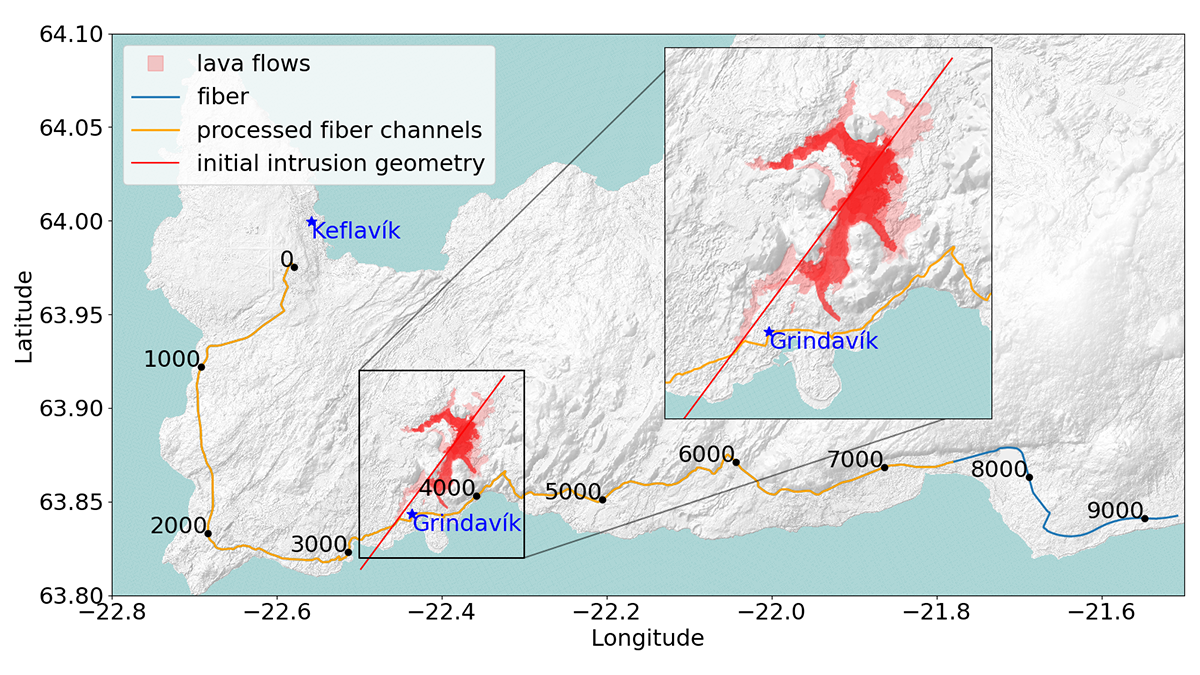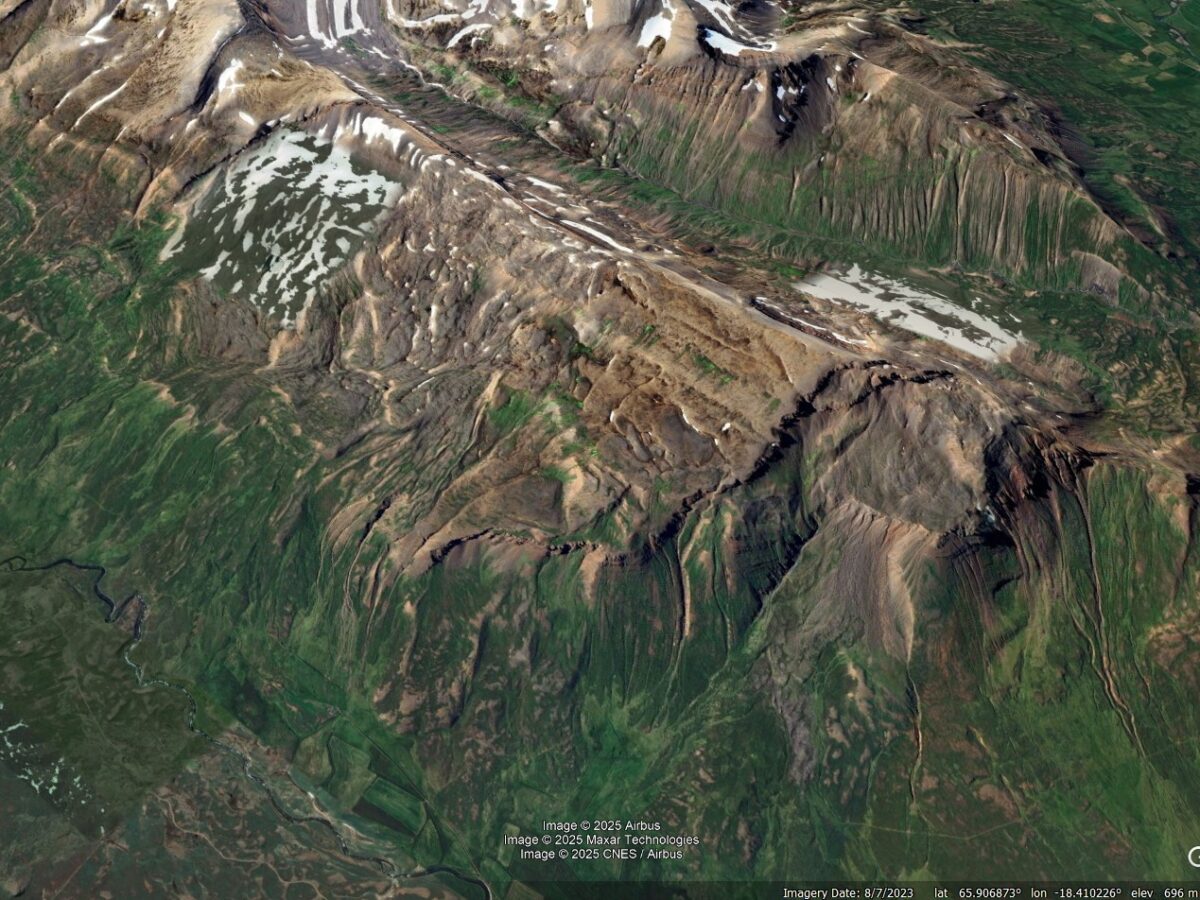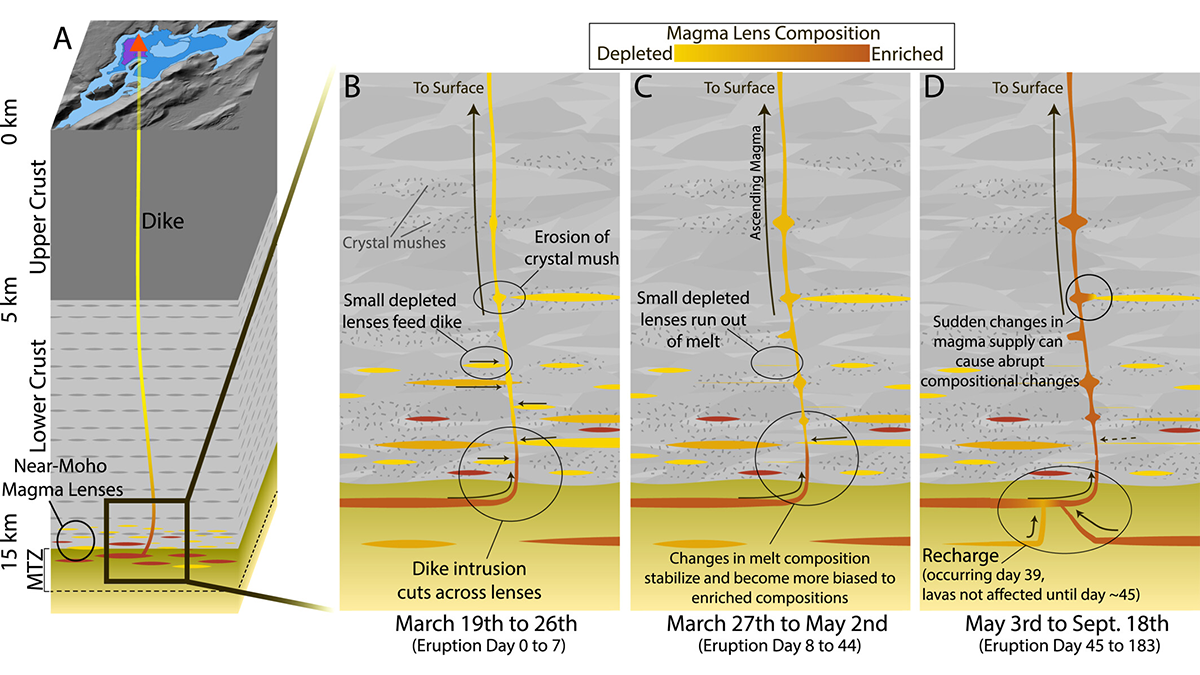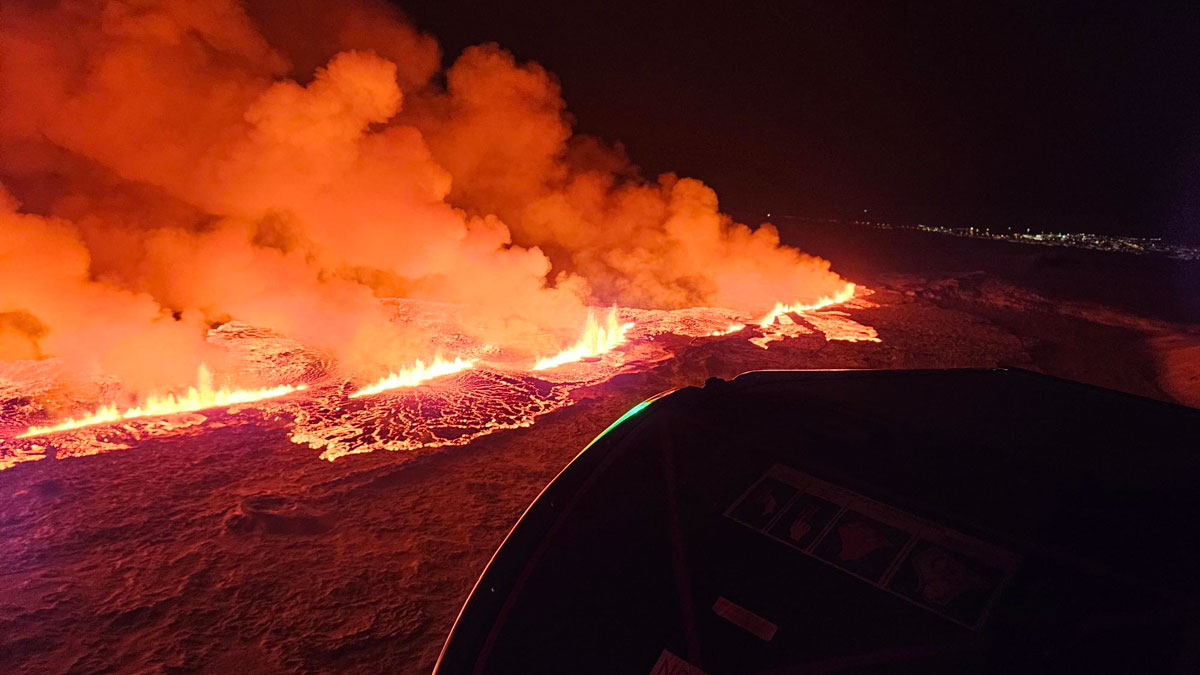Climate change heats not only the air and the ocean but also the soil, where key processes that determine fertility and carbon sequestration operate in a fine-tuned balance.
Iceland
Revised Emissions Show Higher Cooling in 10th Century Eruption
The associated cooling from the Eldgjá eruption is larger than previously predicted and better matches tree-ring temperature reconstructions based on updated estimated emissions.
Observing Magma-Induced Seismic Velocity Changes with Fiber-Optics
A new high-resolution method for tracking volcanic activity utilizes fiber-optic sensing to detect magma intrusion by measuring seismic velocity changes.
Turning Carbon into Stone: Unlocking Mineralization in Fractured Rock
Carbon mineralization is a promising solution for mitigating greenhouse gas emissions, but we must learn to optimize the complex interplay between reactions and mechanics in fractures to develop a scalable solution.
The timing of landslides in areas of permafrost thawing
The Landslide Blog is written by Dave Petley, who is widely recognized as a world leader in the study and management of landslides. There is a no scientific doubt that human activity is driving rapid warming of the terrestrial climate, and that this is amplified in high latitude and high mountain environments. An inevitable, and […]
Thawing Permafrost Helped Trigger Ancient Icelandic Landslides
New research shows that warming beginning about 13,000 years ago contributed to a proliferation of landslides in Iceland.
Magma Diversity in Iceland
Iceland’s recent basalt eruptions originated at the crust-mantle boundary and show chemical variability over remarkably short timescales of weeks, suggesting exchanges between diverse magma sources.
En una rara oportunidad, investigadores observan la formación de los valles islandeses
Durante el período previo a las recientes erupciones volcánicas cerca de la ciudad de Grindavík, científicos documentaron la formación de grabens en tiempo real.
¿Qué tan líquida es esa lava?
Un nuevo dispositivo ayuda a los científicos a medir la viscosidad de la lava durante los derrames activos.
An interesting landslide mechanism from Iceland
The Landslide Blog is written by Dave Petley, who is widely recognized as a world leader in the study and management of landslides. Iceland Monitor has a very interesting article about a small landslide that occurred during heavy rainfall 0n 13 to 14 July 2024 on the southeastern side of Skíðaskálinn in Hveradalir, Iceland. This […]

